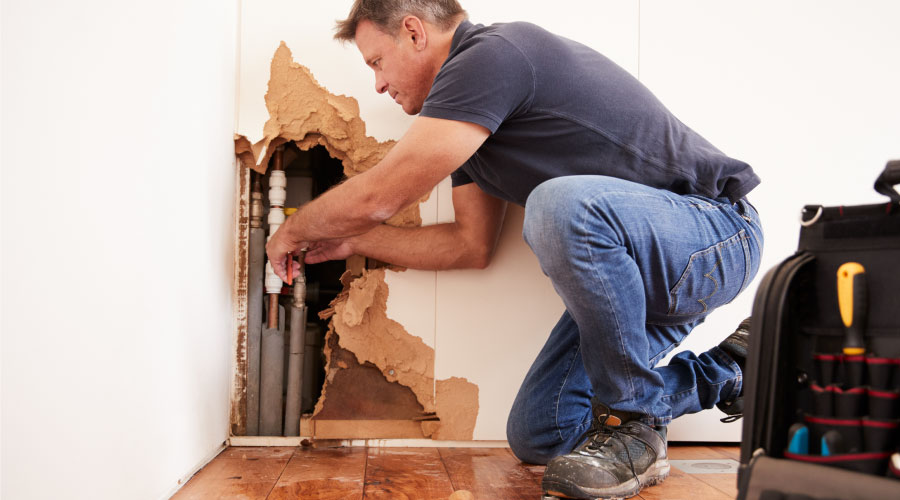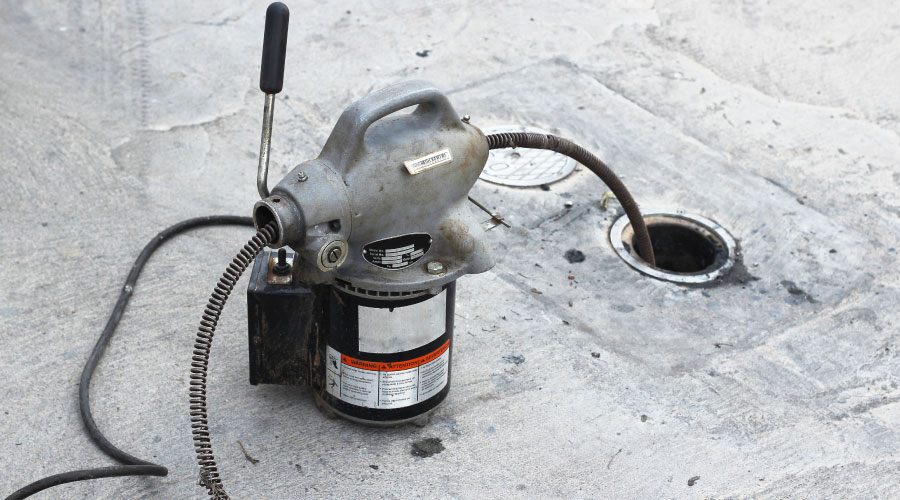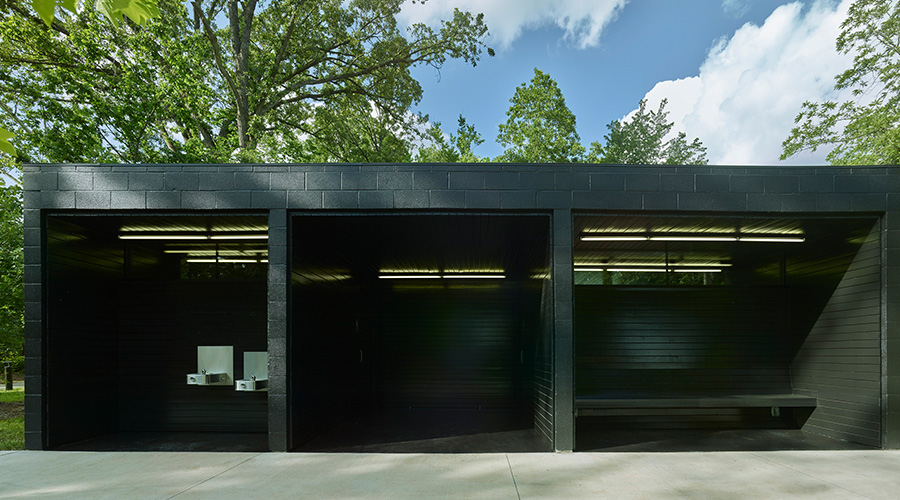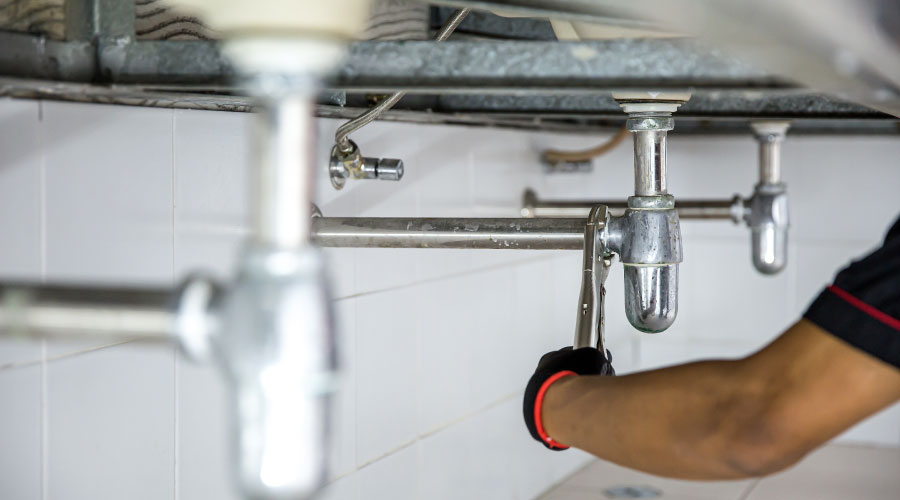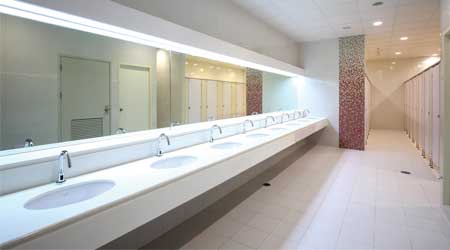 The appearance of a restroom should support the image of the building.
The appearance of a restroom should support the image of the building.Can Your Restrooms Pass This Test?
Facilities managers should ask themselves these six questions to determine if it's time for a restroom modernization.
Restrooms are one of the highest sources for complaints from occupants today. Facility managers struggle with issues ranging from costs to cleanliness. Bowing to the pressure, facility managers schedule more frequent cleanings or conduct more frequent inspections, or install fancy new — but untested — equipment that purports to solve all their problems. But no matter what facility managers seem to do, other issues crop up and the number of complaints doesn’t go down very much. As a result, many simply accept that you can’t satisfy everybody, and they move on to other issues.
The problem may be that facility managers are losing sight of the big picture. Installing new devices, scheduling more frequent cleanings, and other efforts focus on specific issues in the restrooms but ignore the possibility that what is really needed is a total renovation.
Restrooms, like all building components, have a service life. In most facilities, this is somewhere around 20 years. And while the restroom components may still be functioning at 20 years, the restroom may no longer be meeting the needs of the building occupants or owners.
Look at how things have changed over that 20-year time frame. Operations conducted within the building are not what they were two decades ago. The number of employees and visitors may be much greater, or much less, than when the restrooms were installed. Building codes have undergone major changes. Restroom equipment has evolved. And equally important, people’s expectations have grown. The norm of 20 years ago is no longer acceptable to many today. Piecemeal improvements may not get facility managers what they need. A total renovation may be the best solution.
How do you determine that a renovation is needed? First, understand the issues that the current restroom operations are facing, and what must be done to address each of those issues. Next, the benefits of options available need to be examined, as well as their costs. How do you accomplish that? Start by examining the issues identified here to see if they apply to the facility. The more issues that do, the greater the need for a total renovation.
Is the restroom too old?
Restroom fixtures, partitions, and other components are long-life items. Most have a rated service life of 20 years. But even when 20 years have passed, many continue to function properly, so the typical response is to leave them in place. Why fix something that isn’t broken?
While that might seem to be the most practical approach, it can and does lead to problems for those who must maintain the restrooms. Even with the best maintenance practices, components deteriorate. The partitions may still be standing, but the doors may not latch properly or the surfaces may be pitted or corroded. Water closets and urinals may still flush properly, but their surfaces now show wear, making them look dirty even when they are clean. Faucets may still operate, but now their finish is tarnished, they drip, and maintenance personnel are complaining that they are having trouble finding replacement parts.
Is the appearance dated?
Determining that a restroom’s appearance is dated is a subjective process that is made more difficult when it is an area that you see on a daily basis. While it is hard to define, it is very easy to see, if you look for it. Think back to any time that you have been in the restroom of an older, unfamiliar building. If you entered the restroom and suddenly felt like you had entered a time warp, those facilities are dated. A dated appearance is good if that is the ambiance that the owners of the building are trying to achieve. If not, well, the appearance of a restroom has just dated the entire facility.
To effectively evaluate a restroom’s appearance, approach it as if you were a first-time visitor to the building. What do you see? Does its appearance reflect the appearance and theme of the remainder of the building, or did you just step back in time?
Beyond the general impression that a restroom gives, look a little closer at the details. Are there damaged or cracked tiles? Have individual tiles been replaced with ones that don’t quite match? Are the countertops scratched or chipped? Does an outdated lighting system make the area look dingy? Does the appearance of the restroom detract from the image the rest of the facility projects?
Is it ADA-compliant?
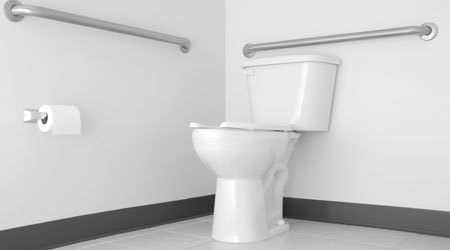
(A facility manager evaluating restrooms should bring in an expert on the Americans with Disabilities Act to determine whether changes need to be made in order to meet ADA requirements.)
The older the restroom, the greater the chances that significant changes will be required to comply with current ADA requirements. It is best to use an expert in the field to determine what needs to be done to the restrooms to bring them into compliance. While some fixes and changes are minor in nature and can be readily implemented, other may require a renovation to comply. New entrances may have to be installed, fixtures may have to be relocated, or new controls may have to be installed.
Can operating costs be cut?
Because operating and maintenance costs are rarely tracked separately for restrooms, it is difficult to evaluate their impact when considering renovations. However, there are ways to identify potential savings from a renovation.
Start by examining the restroom’s fixtures. Code requirements governing water use by fixtures have been in place for years. If fixtures predate these requirements, then a renovation can reduce water use and costs. Even if fixtures were installed some time ago, and those fixtures complied with the latest codes, advances in fixture designs can produce even more savings.
For example, LEED guidelines limit water use to 1.28 gallons per flush for water closets and 1.0 gallons per flush for urinals; both water use rates are below what current building codes require, and even further below what past building codes accepted. And zero-water consumption urinals, now gaining wider acceptance, eliminate water use by urinals completely.
Renovation may also reduce maintenance costs. If possible, go back through records to see how often there have been maintenance calls for the restrooms. Some of these will be routine, regardless of the age of the restroom, but others will be a direct result of the aging or inadequate designs.
For example, one of the biggest complaints from maintenance personnel is the lack of isolation valves on fixtures. In the event of a leak or the need to replace a component, the entire restroom must be taken out of service. To make matters worse, the shutoff valves that have been installed may not hold, making it necessary to take down water service to even larger portions of the building.
The lack of sufficient custodial closets increases labor costs as maintenance personnel must cart their supplies and cleaning equipment between restroom locations.
Does the restroom have touchless controls?
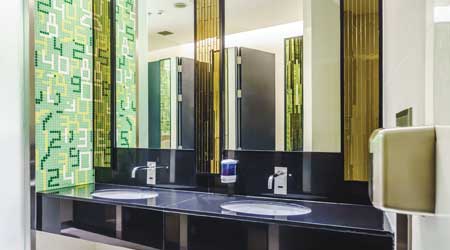
(Touchless controls for flush valves, faucets, hand dryers and soap and paper towel dispensers go a long way toward making people feel comfortable.)
One of the biggest areas of complaints from users is about cleanliness and hygiene, real or perceived, particularly on surfaces that they must touch. Simply put, nobody likes to touch anything in a restroom. Touchless controls for flush valves, faucets, and soap and paper towel dispensers go a long way toward making people feel comfortable.
While touchless controls are not new to restroom applications, some facility managers have avoided installing them due to issues that others may have experienced with earlier versions of the controls. Today, the controls are easier to install and maintain. Units are available that are powered by batteries or by low voltage. Battery life in typical installations is between two and five years.
Can lighting be improved?
The cost of lighting in restrooms is often overlooked in designs. Fixtures are installed to give a desired lighting level. The result has been the standard acoustical tile ceiling with fluorescent fixtures. While the lighting levels may be good, the appearance is institutional. Institutional lighting may have been acceptable 20 years ago, but no longer. People expect more today.
The old lighting standard for lighting in restrooms provided uniform lighting levels throughout the restroom. Fixtures were installed in a uniform pattern on the ceiling. But uniform lighting levels resulted in overlit and underlit areas. Today, system designers strive to provide just as much light as is needed only where it is needed.
Take a close look at the lighting in the restroom. Does it provide adequate lighting levels throughout the restroom, or are there areas that appear dingy? Are the fixture lenses clear or highly discolored? What type of light source is used: incandescent, fluorescent, or LED? What type of controls are installed on those lights? Lighting controls are particularly important in trying to reduce energy costs, as most restrooms are unoccupied for more than 90 percent of the time.
Time to renovate?
It’s essential to consider the importance that each of the above six items has to a given facility. If the appearance of the restrooms is in significant conflict with the image that the organization is trying to project, that by itself may be sufficient to trigger the renovation decision. Same thing holds true for maintenance personnel struggling to keep things running. If the staff can’t maintain it, then it is time to renovate.
Beyond these examples, there is no set number of criteria that mandate a renovation. Other factors may come into play as well. For example, does the restroom have the capacity to handle the traffic load? Changes in building occupancy patterns may have resulted in the restroom being undersized or even oversized for today’s needs.
But as a starting point, by evaluating each of these six important factors, it will become clearer to facility managers, and to those who must approve the budget, that a renovation may be worthwhile.
James Piper, PhD, PE, is a writer and consultant who has more than 35 years of experience in facilities management. He is a contributing editor for Building Operating Management.
Email comments and questions to edward.sullivan@tradepress.com.
Related Topics:











